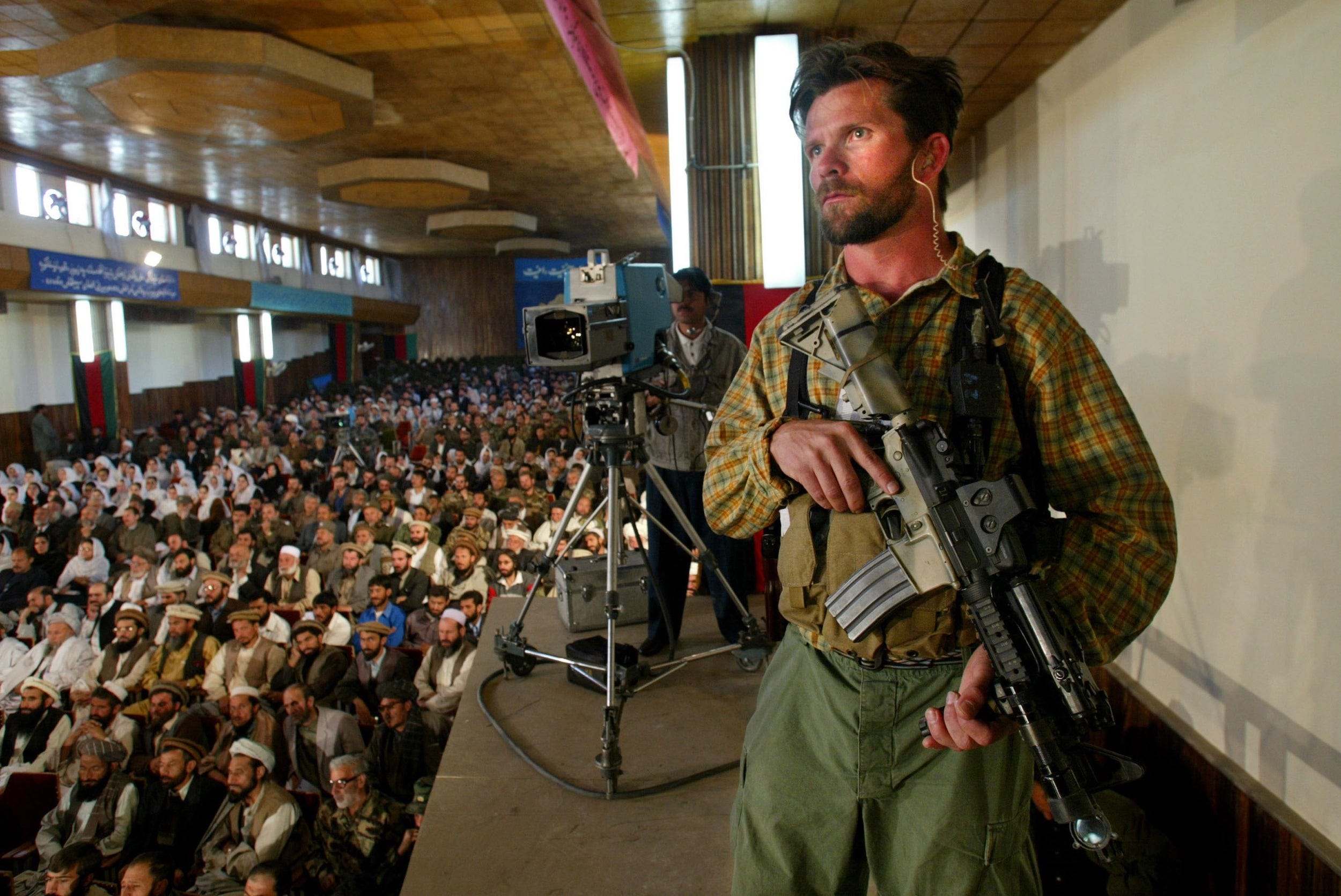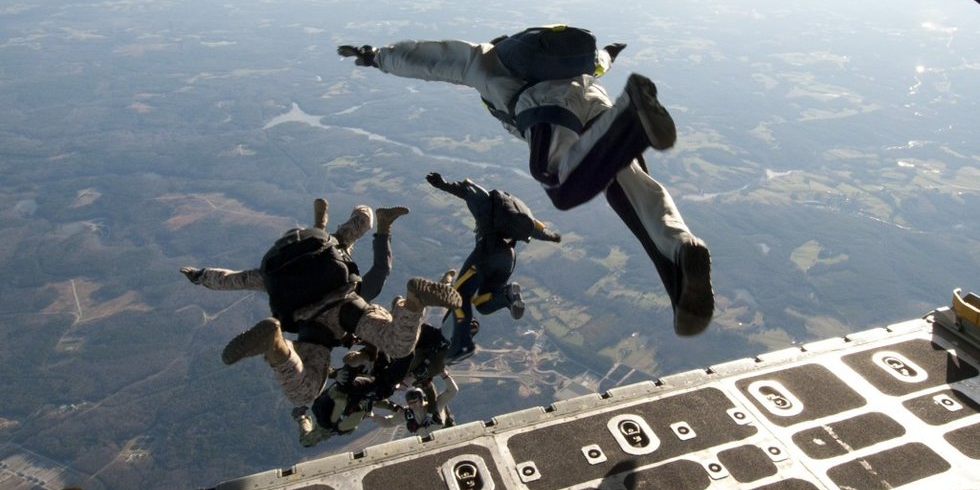
US Navy
- In the early-morning hours of October 31, members of SEAL Team 6 descended on a site in northern Nigeria to rescue an American held hostage there.
- Navy SEAL Team 6 and the Army’s Delta Force are the main special-operations units for hostage-rescue missions, but the SEALs have a specific tactic that sets them apart.
- Visit Business Insider’s homepage for more stories.
Early on Saturday, October 31, commandos from SEAL Team 6 rescued an American hostage who had been abducted by criminals in northern Nigeria.
The SEAL operators conducted a free-fall parachute jump close to the target and then silently approached where the kidnappers were holding Philipe Nathan Walton. All but one of the kidnappers were killed in the ensuing firefight, and Walton was freed.
Despite the huge logistical difficulties behind the operation, it was just another day at the office for the SEALs.
The cream of the SEAL crop

US Department of Defense
Composed of four assault squadrons (Red, Blue, Gold, Silver), SEAL Team 6 is the Tier 1 unit of Naval Special Warfare and part of the secretive Joint Special Operations Command (JSOC). It specializes in counterterrorism, hostage rescue, counter-proliferation, direct action, special reconnaissance, advance force operations, and maritime special operations.
Unlike its Army counterpart, Delta Force, SEAL Team 6 recruits solely from within Naval Special Warfare. That means only SEALs and Special Warfare Combatant-Craft Crewmen (SWCC) can become assaulters.
Potential assaulters first have to go through a review board before starting the selection process. Known as Green Team, the selection process places extreme emphasis on close-quarters battle and free-fall parachuting. Despite starting with top-notch candidates, Green Team's attrition rate is still significant, ranging from 40% to 50%.
Like Delta Force, SEAL Team 6 has augmentees who haven't passed Green Team as well as support personnel and enablers attached to the unit. They include cryptologic technicians, explosive ordnance disposal (EOD) technicians, and military working dog handlers.
Masters of military free-fall

US Navy/Mass Comm Specialist 2nd Class Meranda Keller
SEAL Team 6 is renowned in special-operations circles for its military free-fall capabilities. Standard military parachuting, better known as static-line, requires little skill — just jump out of the aircraft door and the parachute should deploy.
Military free-fall parachuting, however, is a different beast. Divided into two categories — High Altitude High Opening (HAHO) and High Altitude Low Opening (HALO) — it requires lots of training and practice to master.
In a HAHO jump, commandos deploy their parachutes soon after exiting the aircraft at 25,000 to 30,000 feet and glide 20 miles to 40 miles to their target. This is a great option when you want to hide the presence of the aircraft, since it doesn't have to fly too close to the target. It's also a good option for cross-border operations.
A trooper will deploy the parachute at different altitudes depending on the jump. In a HALO jump, the commandos would jump from the aircraft at altitude similar to or lower than HAHO jumps, free fall, and then deploy their parachutes close to the ground, ensuring a stealthy and orderly insertion.
Nowadays, most US special-operations troops go through free-fall training, but SEAL Team 6 has taken the skill set to another level.
During the hunt for Osama bin Laden, SEAL Team 6 always had an assault troop (about 20 operators) on standby to conduct a HAHO jump into Pakistan to kill or capture the Al Qaeda leader. The plan was for the assaulters to jump from Afghan air space and glide to the target in neighboring Pakistan.
In the end, it took a standard helicopter assault to kill Bin Laden, but SEAL Team 6 operators used their HAHO capabilities in Afghanistan on other occasions.
In 2005, the designated HAHO troop for the Bin Laden mission (at the time it was a Red Squadron troop) jumped in Afghanistan and captured several mid-level Al Qaeda terrorists.
A few months later, the designated HAHO troop (from Blue Squadron this time) jumped in to rescue David Addison, a British security contractor abducted by the Taliban. But they were too late, as the Taliban had already killed the hostage.
When it comes to counterterrorism and hostage-rescue operations, Delta Force and SEAL Team 6 are almost equal — the SEALs have an edge when it comes to maritime operations — and both have taken close quarters combat (CQB) to the next level.
Best of the best, but not infallible

US Department of Defense
Early in the Global War on Terror (GWOT), JSOC divided the workload between its two direct-action Special Mission Units to ensure sustainability and effectiveness, assigning each an area of operations. Delta Force got Iraq, and SEAL Team 6 got Afghanistan.
This meant that Delta Force had the lead in the JSOC operations against the Iraqi insurgency, while SEAL Team 6 focused on the Taliban and Al Qaeda. That is why SEAL Team 6 got the Osama bin Laden mission and Delta Force the Abu Bakr al-Baghdadi operation.
At any given time, a SEAL Team 6 squadron is on standby for a counterterrorism or hostage-rescue operation anywhere in the world.
In 2009, they rescued Captain Richard Phillips from his hijacked tanker, and in 2012 they rescued Jessica Buchanan from Somali pirates.
But SEAL Team 6 is not without its failures: In 2010, the unit attempted to rescue Linda Norgrove, a British aid worker captured by Taliban fighters, but a SEAL accidentally killed Norgrove with a grenade during the assault.
Stavros Atlamazoglou is a defense journalist specializing in special operations, a Hellenic Army veteran (National Service with the 575th Marine Battalion & Army HQ), and a Johns Hopkins University graduate.
